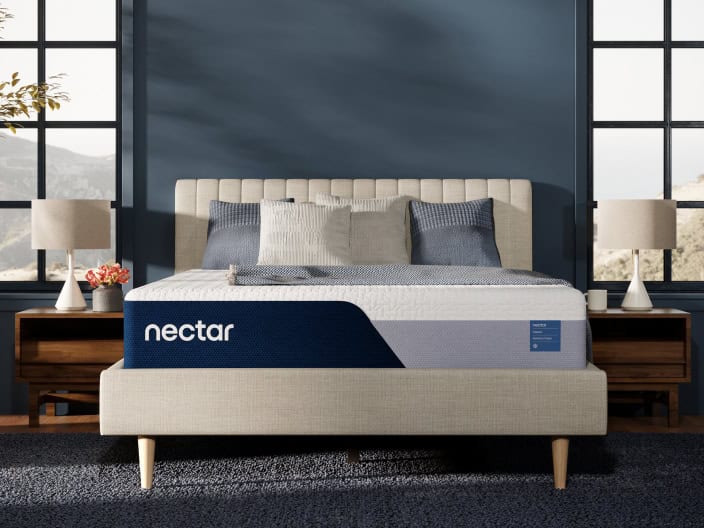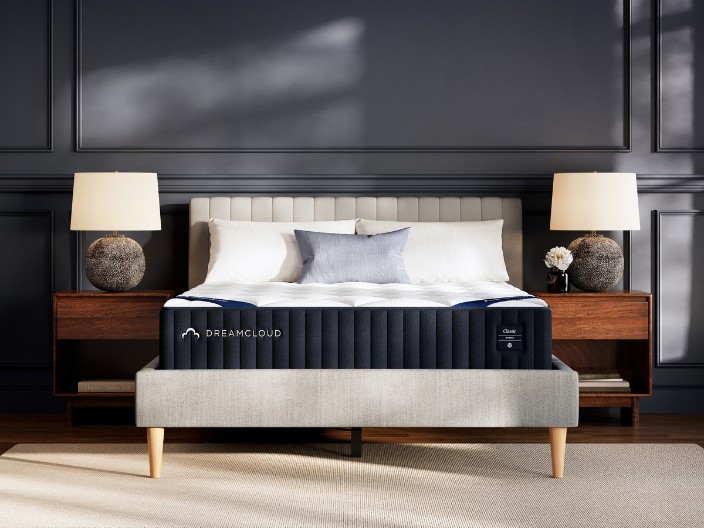11 Different Types of Pillow Stuffing
Share
Fact checked
Reviewed by experts
Updated
December 19, 2022
Quick read
6 mins to read
List of Content
Buying a pillow sounds like a piece of cake, right? Just click on buy now, and you are good to go. But wait, what about the filling? The stuffing or filling inside the pillow gives it the necessary definition. In addition, the pillow stuffing types and their quality make the pillow unique. So, when buying a pillow, it is imperative to choose the right pillow stuffing!
This article brings you all the different types of pillow stuffing available, so you hit buy on the one that seamlessly matches your needs. Read ahead to know more!
Pillows are usually differentiated based on their stuffings. The material that’s used for the filling is directly related to your comfort. From down to polyester fills, you will find a plethora of different fills in the market today. Let’s take a look at them in detail below.
Down Pillow Stuffing
Down stuffing for pillows comes from the underbelly of a bird’s feathers, specifically duck or goose. The main advantage of using a down pillow is that it holds the loft more than its synthetic counterparts. Also, the down pillow is exceptionally fluffy and soft.
When it comes to a down pillow, Hungarian goose down or commonly known as the European white goose down is the most preferred filling as it ensures the highest quality.
A high-quality down pillow will only contain down filling and not feathers. Usually, an average quality down pillow will have a mix of feathers as it is cheaper and used to add more volume.
Cost: On average, a down pillow is anywhere between $80-$200. Let’s take a peek at the pros and cons of down!
Pros
- One of the reasons why people prefer down is because it can hold its shape, which means better neck and back support.
- It is very light and fluffy.
- When you take care of down pillows properly, they can last very long.
- Down is recyclable.
Cons
- If you are a sweaty sleeper, this one may not be for you as it absorbs body heat and can make you feel uncomfortable
- You need to re-fluff the pillow before using it
- It is an expensive option and can also feel too soft for some
- It is not animal friendly
Feather Pillow Stuffing
Feathers are almost down but not quite there. So, if you want the same fluffiness of a down but something cheaper, you can go for a feather filling. But one disadvantage of choosing a feather pillow is that it may become slightly flat with time as the feather quills arrange themselves parallel. But a few manufacturers add down clusters to maintain the loft of these pillows. It also ensures that the pillows last long.
Cost: They are priced between $25-$50
Pros
- They are light and fluffy.
- Cheaper than a down pillow stuffing.
Cons
- It loses its shape with the use
- Quite difficult to clean the pillows
- Absorbs body heat
- It is not animal friendly
Polyester Fiberfill Pillow Stuffing
Also known as polyfill, polyester fiberfill pillows are lightweight, soft, and oh-so-fluffy. And the best part is that polyfill stuffing is not very expensive. While it is very easy to clean, the fiberfill gets clumped with regular use. It also absorbs body heat and can make you feel quite warm when you sleep. Some of the advantages and disadvantages are below.
Cost: Anywhere between $5-$10
Pros
- The polyester fiberfill pillow stuffing is extremely cheap.
- They are light and fluffy.
- Very easy to clean.
Cons
- They are not very durable.
- They tend to lose their loft with regular use, and fillings tend to clump together.
- It absorbs heat.
Memory Foam Pillow Stuffing
When you opt for memory foam pillows, you can either opt for shredded memory foam or solid. Curated out of polyurethane and synthetic chemicals, this is one of the pillow filling types that gives you the sinking-in feeling where it conforms to the shape of your head and lets you enjoy deep sleep. However, a few memory foam pillows may emit a pungent smell.
Cost: Starts from $50 and can go up to $150
Pros
- It offers excellent pressure relief and support and contours to the shape of the head.
- It does not clamp together.
- Support all types of sleepers including side, back, and stomach sleepers
Cons
- May let out a foul off-gassing odor.
- It may absorb body heat, making you feel slightly warm.
- It can be slightly expensive.
Buckwheat Hull Pillow Stuffing
Buckwheat hull filling is a sustainable option if you want something eco-friendly. The pillow fillers are made out of the outer shells of buckwheat kernels. Each pillow fill at least has about five to ten pounds of hulls.
One of the major advantages of these pillow fillings is that it keeps you cool as you sleep. In addition, buckwheat pillows also come with lavender flower filling. The lavender-filled pillow emits lovely smells and enables a deep, sound sleep.
Cost: $50 to $150
Pros
- They can last almost 10-20 years.
- Buckwheat hull stuffing can keep you cool at night and is breathable.
- It is highly supportive of the neck and back.
Cons
- You may hear a slight crackling sound if you are someone who tosses and turns a lot.
- They are not lightweight and can weigh more than 10 pounds.
- Some may find the pillows too firm.
Microbead Pillow Stuffing
Microbeads are a cheaper and synthetic alternative to buckwheat hull stuffing made from polystyrene. But one disadvantage is that the filling may become quite flat and harmful to the environment with regular use.
Cost: Starts from $20 and can go up to $150
Pros
- Allows airflow and is breathable.
- It offers the right neck and back support since they are easily moldable.
- Not heavy at all, and you can easily carry it.
Cons
- Heavy off-gassing.
- Not very firm.
- They have a short lifespan.
- Not good for the environment because microbeads take a very long time to biodegrade and can cause plastic particle water pollution. In fact, former President Obama also signed the ban on microbeads.
Latex Pillow Stuffing
Latex is a natural foam made from the sap of the rubber tree. The material has a natural bounciness and keeps you cool as you sleep. You will come across shredded latex and solid latex pillow foam stuffing like memory foam stuffing. If you want something eco-friendly, you can always opt for Dunlop latex.
Cost: Starts from $40 to $200
Pros
- Medium soft and bouncy.
- Keeps you cool at night.
- Eco-friendly.
- Lasts long.
- Breathable.
Cons
- You may notice a slight rubberish smell.
- It can be slightly expensive because the material is expensive to produce. Also, the procedure of procuring natural latex can be time-consuming.
Kapok Pillow Stuffing
Kapok pillow stuffing comes from the Kapok tree in Mexico, which produces flowers that almost resemble cotton. This is also referred to as silk cotton. It is a popular pillow stuffing today because they are eco-friendly and fluffy. However, it can be expensive and not readily available.
Cost: $40-$150
Pros
- They are eco-friendly and free of any harmful chemicals.
- Soft and fluffy.
- Breathable.
Cons
- It is flammable because the fiber tends to trap air.
- May lose shape after regular use.
Wool Pillow Stuffing
Wool stuffing for pillows has been on the market for ages now. It is a popular choice from blankets to mattresses to outdoor pillow stuffing. However, when it comes to wool filling for pillows, it is not a very popular choice as it tends to get clumped very quickly. It is also a popular cushion filler.
Cost: $25-$200
Pros
- If you opt for organic wool, it is usually free of any toxic chemicals
- Breathable.
- Wick away heat.
Cons
- It can become clumpy with regular use.
- Not animal friendly, according to some people.
Cotton Pillow Stuffing
Pure cotton pillow stuffing has been around for a very long time now. It is still one of the popular choices because it is cheap, lightweight, and breathable. Another advantage of using cotton pillows is that they are hypoallergenic. They are also used for cushion stuffing. So, if you suffer from bouts of allergies, this natural pillow stuffing can be a suitable option.
Cost: $20-$150
Pros
- They are durable.
- Wicks away heat.
- Breathable.
- Hypoallergenic.
- All-natural and organic.
- Comfortable.
- Best for all types of sleepers.
Cons
- They may become lumpy over time.
- You will have to replace the filling frequently.
Down Alternative Pillow Stuffing
If, because of budget or because of the source, you are not comfortable with down but want something that resembles its qualities, down alternative pillow padding is an excellent choice for you. Take a look at its pros and cons below.
Cost: $20-$100
Pros
- It is cheaper than down.
- Easily available.
- Easy to clean.
Cons
- They may develop lumps over time when used regularly.
- They are not able to hold their loft up.
- They absorb heat.
These were some of the most popular types of pillow stuffing available in the market.
How To Choose The Right Pillow Stuffing?
Take a look at a few tips that will help you choose the right pillow stuffing!
Firmness
The firmness of a pillow depends on your preference and your sleeping position. For instance, if you are a back sleeper, a firm and thin pillow will be suitable so that your neck and spinal alignment remain intact.
Breathability
If you are a sweaty sleeper, choose a pillow fill that is known to keep you cool throughout the night. A pillow filling like cotton can keep you cool throughout the night as it regulates heat.
Budget
One of the essential factors while making a purchase is the budget. While down and feather can be expensive, polyester and down alternative pillow stuffings are affordable. While buckwheat hulls, latex or memory foam pillow stuffings are medium-ranged.
Sleep Style
You must also consider your sleep style before making a decision. For instance, a firm to extra firm is suitable for a side sleeper.
Availability
The final pointer you must check is the availability of your preferred pillow. However, one of the advantages of opting for an online store is that you can bring home any pillow stuffing as per your needs.
Conclusion
Pillows are essential as they help you sleep well and enhance the look of your room. Now that you know about all the different types of pillow stuffing available in the market, we hope making the right choice is much easier for you!
FAQs
It depends on the pillow stuffing. For instance, polyurethane may be off-gassing some toxic chemicals.
Irrespective of the pillow filling, dust mites can infest pillows, such as down, feather, and foam.
Cotton and wool are all-natural and least toxic pillow stuffing.
Yes. A memory foam pillow ensures you sleep well and keeps you comfortable, and offers proper spinal alignment.
Natural pillows are made of organic materials, such as cotton, wool, latex, etc.
When washing your pillows, first read the care instructions carefully. Next, wash it with cold or lukewarm water and use a mild detergent to wash the pillow stuffing.
This website does not offer medical advice nor professional medical services; rather, it is provided solely for educational, informational, and/or entertainment purposes. Individuals seeking medical advice should consult a licensed physician. The information provided should not be used for diagnosis or treatment of any condition, disease, or injury. When you have a medical condition, you should always talk to licensed doctor or other certified medical professional. You should never delay seeking professional medical advice or treatment based on the contents of this website. Call 911 or immediately go to the nearest emergency room if you think you may have a medical emergency. The contents of this website are provided “as-is”, Sleep Authority and its parent, subsidiaries, affiliates, employees, contributors disclaim any warranty of the information contained herein. Please contact using contact form to report any errors, omissions, misinformation, or abuse.





